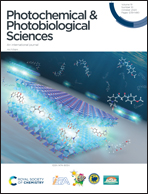Microcystis aeruginosa inactivation and microcystin-LR degradation by the photo-Fenton process at the initial near-neutral pH
Abstract
Of all cyanobacteria, Microcystis aeruginosa is the most commonly found species in bloom episodes all over the world. This species is known to produce cyanopeptides with hepatotoxic effects, namely microcystins (MCs). In this regard, Advanced Oxidation Processes (AOPs) have been widely studied for cyanotoxin degradation, but very few studies focused on cyanobacteria inactivation combined with toxin removal. To our knowledge, this is the first report of the photo-Fenton process application focusing on M. aeruginosa inactivation and microcystin-LR (MC-LR) degradation. This research work aimed to evaluate the photo-Fenton process under three different conditions with regard to Fe2+/H2O2 ratios (0.6/10, 5/50, and 20/100 mg L−1) at the initial near-neutral pH. Process efficiency was measured by immediate cell density reduction, growth inhibition, effect on MC-LR concentrations, and scanning electron microscopy (SEM) to analyze any alterations in cell morphology. Growth inhibition test (GIT) results pointed to cell inactivation under all conditions tested, and MC-LR concentrations were reduced below WHO's maximum limit at medium and higher concentrations of reagents. The possible mechanisms of cell inactivation by oxidative species are discussed.



 Please wait while we load your content...
Please wait while we load your content...